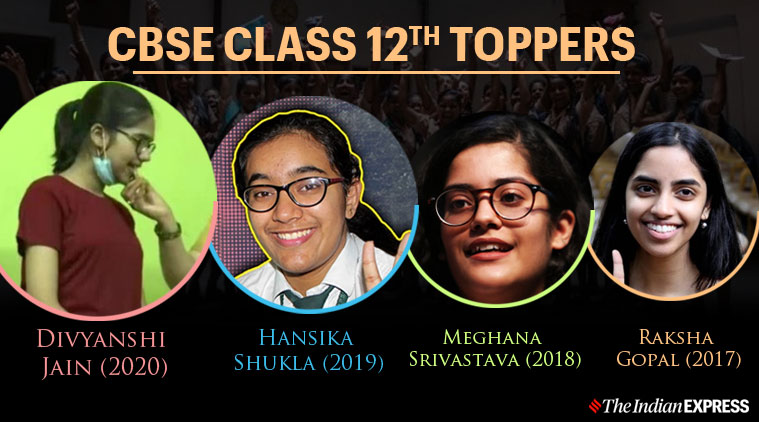 CBSE 12th toppers over the years
CBSE 12th toppers over the years
CBSE class 12 topper Divyanshi Jain knew she would score well, but was taken by surprise when she saw her mark sheet. Jain has not lost a single mark in any of the six subjects she appeared for this year. Even in subjects like English, where scoring 90 is a dream, Jain has got a centum. Four years in a row, toppers — all girls — have emerged from the Arts or Humanities stream.
For decades, Science and Commerce stream students have dominated the elite 95-plus bracket in the CBSE and other state boards. Their humble cousin, Arts, was considered best for those who are either poor in maths or low scorers. But the scenario has changed. Like in the other two streams — history, political science, economics, English, psychology students are achieving a full 100 marks and there are multiple reasons for this development.
DPS Indirapuram principal Sangeeta Hajela explains that the marking scheme has changed and therefore, now scoring 100 marks in any subject isn’t impossible. “With the introduction of practical/project work component in many subjects like psychology, history, sociology, students get a chance to show their knowledge in both theory and practical. The internal marking varies from subject to subject – 30:70 or 20:80. That is why, like the Science stream, students can score well in Arts,” explained Hajela.
The language subject marking was always conservative. Unlike maths or physics, which are based on an exact formula or science, English or other language subjects were believed to be creative and therefore, there is always scope for improvement. However, in the last three years, toppers’ mark sheets have surprised many. CBSE 2017 topper Raksha Gopal scored an unbelievable 100 in English, while Meghna Srivastava (2018 topper) and Hansika Shukla (2019) got 99 marks each. This year’s top scorer Divyanshi too got 100 in English.
“If a student writes well and covers all points asked in a question, they do deserve to achieve 100 marks,” remarked Hajela, adding that the current marking scheme is more transparent and the objective is clear. “They test the student’s ability to comprehend the story and if it has been done well, they do not penalise marking. The approach to evaluate the paper is more objective,” she commented.
Another feature, of marks moderation, has increased the overall pass percentage of board exam aspirants. It is adopted by boards to “bring uniformity in the evaluation process”. The Indian Express in 2017 reported how scores are tweaked to align marking standards of different examiners. Although no board has admitted spiking marks, many experts believe that it is done in the garb of ‘moderation’. Read here
Veteran educationist Shayama Chona too has never seen such results in her over 40-decade career, especially in the Arts stream. She believes that more bright students are taking up Humanities and that is turning out to be a gamechanger. “Earlier students had limited subject options. But with the awareness on STEAM — learning through a combination of science, technology, engineering, art, and maths — education is not limited to medical/ non-medical or Commerce or Arts. It is interlinked. Children are taking liberal arts as there are more avenues these days,” remarked Chona.
Moreover, even students and parents are well-versed with the latest study material. The availability of sample papers or previous years’ papers and mock series helps them narrow down their preparation for the board exam.
The admissions in most colleges are based on class 12 results and therefore Commerce and Arts students are focussed on getting maximum marks in board exams. “There are fewer entrance exams for Humanities students as against Science. Since most medical/ non-medical students focus on entrance examinations, they give priority to it over the board exams results,” pointed out Hajela.